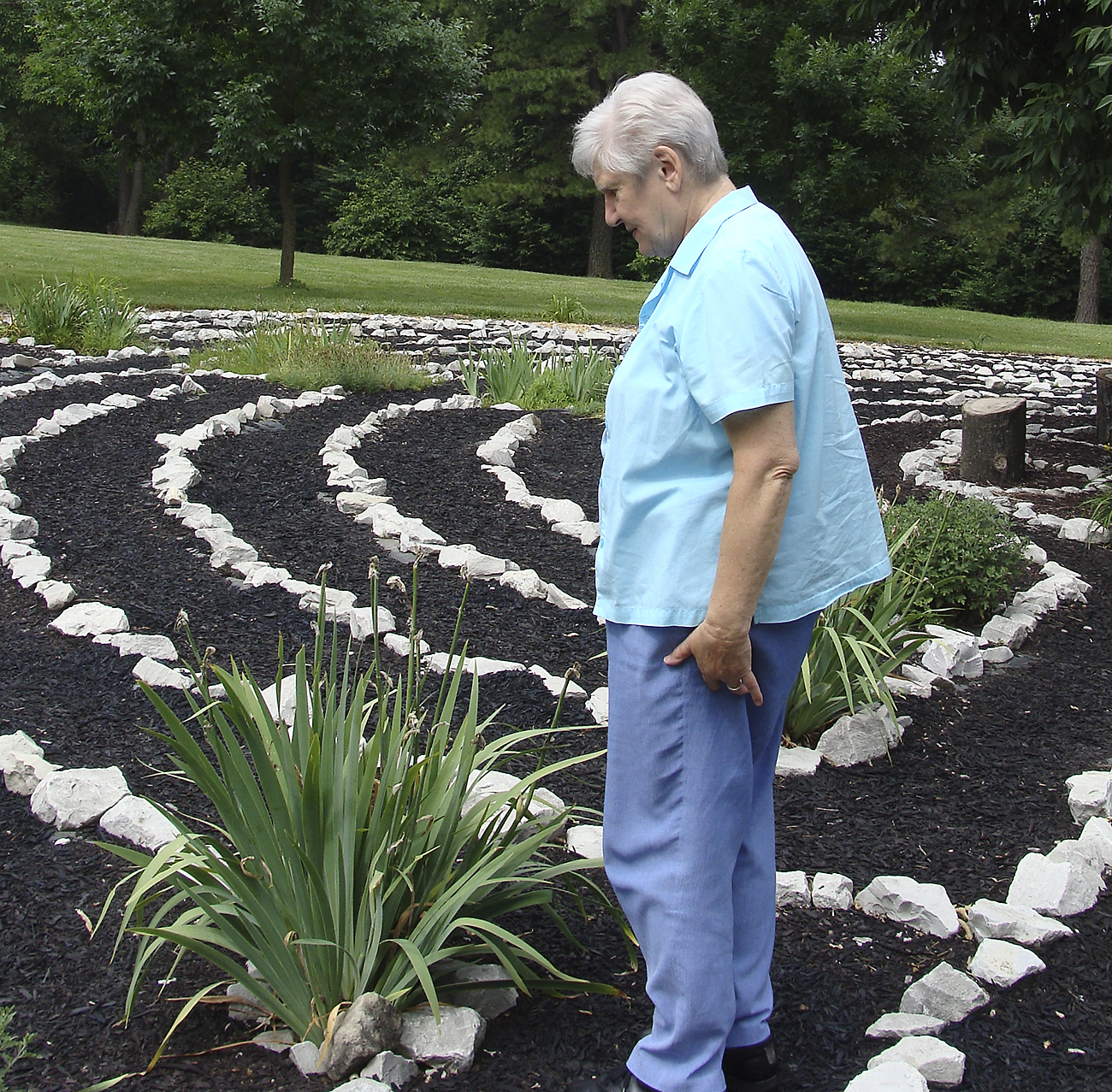Art, Spirituality and Justice
By Amanda LePoire
From an outdoor labyrinth for prayer and reflection, to a mosaic font in the chapel and framed watercolors in the hallways, Sister Corlita Bonnarens’ presence echoes throughout the 70-plus acres of Mercy Center Campus in St. Louis, Missouri.
After earning a master’s degree in art and teaching in secondary schools for 18 years, it was a one-year program on art, spirituality and justice that planted the seed for her current ministry. The program, which appealed to Sister Corlita’s love of art and her respect for creation and ecology, led her to earn a master’s degree in spirituality. After completing her degree, she asked if she could start a program that integrated art, spirituality and justice. Sister Corlita believed that “If I’m supposed to do this, things will fall in place.” Thirty-four years later, she says, “Things fell in place.”
An Outdoor Canvas
Over those three decades, as Sister Corlita has built her creative spirituality ministry, the extensive grounds of Mercy Center Campus where she professed her first vows have become a reflection of her interests in creation and Earth. Childhood summers at her grandparents’ farm in rural Missouri nurtured her deep respect and concern for the environment. The daily routines of her farming family awakened her to “the rhythm of Earth. My grandmother didn’t have the language, but she used to talk about the blessings of nature, the fruits and vegetables and how we’re so dependent on the rain and sun.”
As a way to encourage prayer and reflection while being in touch with the environment, Sister Corlita installed an outdoor labyrinth—one of a handful in the city. She traveled to France and worked with a world-renowned labyrinth expert to design it, and donations of materials and countless hours of volunteer labor have sustained the labyrinth for almost 20 years. Sister Corlita regularly hears stories from people moved by their experiences praying and walking the labyrinth. Friends of a woman who died of cancer donated a bench to honor the blessing that the labyrinth was to her. Another woman recounted how she traveled to the Holy Land looking for answers in her marriage, but it was only by walking the labyrinth that she found guidance.
Guiding Retreatants through Art
While her touch is evident on the campus grounds, hidden in the lower level of Mercy Center Campus is the heart of Sister Corlita’s creative spirituality ministry—her art studio. The studio, once the laundry, is now a creation space for Sister Corlita and the people she leads in reflections that integrate art, spirituality and justice.
“Through guided meditation, hopefully people come in touch with that sacred creative Spirit,” Sister Corlita says. She shows retreatants how to use clay or watercolors to create different images that came forth during meditation. “People are always surprised and amazed at what they can create,” she says.
A Great Work to Do
One of Sister Corlita’s works has gone far beyond the walls of Mercy Center. Inspired by Thomas Berry and Brian Swimm’s book The Universe Story, Sister Corlita created 25 watercolor images that depict significant moments of the unfolding universe. The images are used in a Cosmic Walk ritual to help people become more conscious of the vastness, age and sacred beauty of all life in the universe. In 2001, Sister Corlita applied for a grant to reproduce the Cosmic Walk packets. Since then, she’s sent almost 500 copies around the world.
“Thomas Berry says we all have a great work to do,” she says. “This is mine.”
